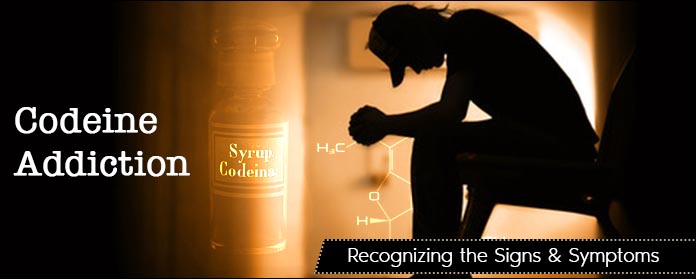Given that for nearly 300,000 people, codeine is their drug of choice, and it’s vital to know how it works and why it can turn into an addiction.
[toc]
Codeine addiction has led to the death of famous musicians and celebrities and could claim more lives from anyone who’s not prepared to combat their addiction. Knowing what to look for is vital to understanding the disease.
Understanding Codeine
For anyone trying to understand codeine, it receives less attention in the news and media than opioids, but it is still one of the most common pain medications being prescribed today.
It often finds its way into prescribed pain medications and cough syrups and even if it is taken properly as prescribed by a doctor, users can still run the risk of becoming addicted to it and seeking out ways to get more of it when the prescription runs out.
It doesn’t take long to become dependent, even if it is only used the way it has been directed. It takes more than the normal course of a prescription to become addicted, but Codeine gives such a strong feeling of euphoria that some people enjoy the way it makes them feel so much, they begin to crave it.
When users find a good resource where they can get a regular supply of codeine, either from a doctor that continues to write prescriptions for them, or from illicit sources, they continue to use it long past the recommended safe usage.
Misuse or abuse of codeine in these respects can soon cause users to establish a dependence that often leads to an addiction to codeine.
Once addicted, it usually causes serious side effects such as headaches or joint pain when the user runs out of their supply. The more that a person takes, the more their body will need it. The body is going to sense pain, even phantom pain, in advance of receiving the next dose of the medication.
This can quickly become problematic.
Look For Signs of Codeine Addiction
It’s hard to find signs of a codeine addiction sometimes because it’s such a mild painkiller. Some people can take it for a while, getting real relief from the actual physical pain they have. However, over time, they’ll struggle because their body will crave the drug more and more as they build up a tolerance to the drug and its effects.
Some people become completely obsessed with the drug after they have formed a tolerance and dependence to it. They’ll become preoccupied with taking the drug, often needing it more and more just to feel the same effects as when they first began using it.
When people start taking the drug when they no longer require it, it’s a surefire sign they could be on a path toward addiction.
However, when patients can’t go without the drug, they’re going to experience withdrawal symptoms in its absence. This is dangerous and difficult to put anyone through, so it’s vital that people have access to the relief that they need.
Another thing to take note of is that codeine should never be mixed it with alcohol. The mixture is deadly when they’re taken together and delirium can set in and become extreme.
When mixed with alcohol, there’s an increased risk of loss of consciousness or overdose, due to the lack of oxygen that stems from the effects or depressed breathing that accompanies codeine use. It is frequently used as a cough suppressant because it works well to calm breathing. When combined with alcohol, the effects can multiply and become much more pronounced.
When someone becomes addicted to codeine and tries to quit using it, the withdrawal symptoms can be extremely uncomfortable and even painful. Once a person reaches the point that withdrawal becomes an issue when they stop using codeine, it often means they are showing signs of addiction.
When dealing with a codeine addiction, many people will experience problems in their gastrointestinal tract. These can begin with cramps in the stomach and quickly accelerate to diarrhea and vomiting. There is often serious pain and tremors that can be accompanied by anxiety and insomnia.
Many people struggling with codeine addiction also suffer serious muscle cramps when they’re trying to quit. The spasms that follow can lead many people to relapse and begin using again, just so they can calm or stop the symptoms and feel better.
It’s common to expect agitated and aggressive behavior from anyone who is struggling with codeine addiction.
Addiction Treatment
When trying to manage codeine withdrawal, the safest place to do so is a medically supervised facility.
Detoxing someone with a codeine addiction is going to be difficult, as it’s very similar to opiate withdrawal although not as severe. When codeine has been safely detoxed from the body of the addicted patient, they’ll begin recovery treatment at a drug rehab facility.
When dealing with someone struggling with codeine addiction, or any addiction for that matter, recovery is a day-by-day process.
It is vital to have a support system of family and friends while in recovery at a treatment facility, and even more so after they complete their recovery stay.
The best way to avoid codeine addiction is to only use it as directed by a doctor, and stop using it when the prescription runs out. For those without a medically necessary prescription, it is imperative to not use codeine recreationally because they can easily become addicted to it.
If addiction does become a problem, it is treatable and can be managed through the help of a licensed treatment facility.





